


 |
 |
 |
| HomeAbout Billiards DigestContact UsArchiveAll About PoolEquipmentOur AdvertisersLinks |
|
Browse Features
Tips & InstructionAsk Jeanette Lee Blogs/Columns Stroke of Genius 30 Over 30 Untold Stories Pool on TV Event Calendar Power Index |
Current Issue
Turns of the Centuries With cues dating to the 1500s, Mark Stellinga's vast collection of billiard artifacts is among the most impressive in the world By Keith Paradise Over the last three decades, Rob Montgomery has crisscrossed the United States in search of antique billiards equipment. The longtime billiard enthusiast would hit the road, driving to antique stores throughout the Midwest, then head a few hours or so out of his Lincoln, Nebraska, home base to shops as far west as Colorado. Originally, Stellinga searched for rare cues, racks, tables and more as curator of sorts for Mueller's Sporting Goods. Later, he branched out on his own. Occasionally, he would venture to shows and stores up and down the East Coast, inquiring about any old or odd pool and billiards artifacts that the retailers might have for sale. Almost every time, he heard the same refrain. 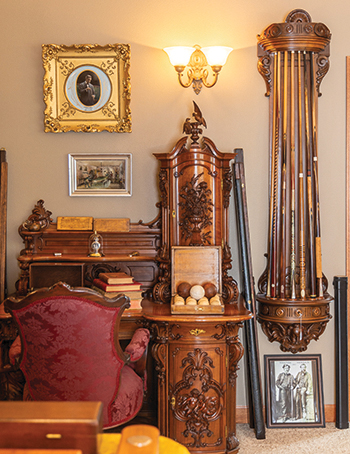 (Photo by Jaimy Ellis) “We usually don't get a lot of billiards stuff in here,” they'd say. “And, when we do, there's this guy in Iowa we call.” The guy is Mark Stellinga, a man who has spent the last 40 years scouring not just the U.S., but the world for the most rare and unique antiques that the pool and billiard industry offered. He was known in the antique industry because he made himself known, advertising in 20 trade magazines, traveling the east coast annually and hitting antique shows in search of anything related to billiards or barbershops. To make their interests even more publicized, Mark and his wife, Connie, had t-shirts made that they wore to the shows promoting their interest. The Stellingas became so proficient at billiard-related antiques that they literally wrote the book on the industry: “Pool and Billiard Collectibles: A Billiard Accessories and Collectibles Price Guide”, published in 2003. Mark is now retired from the business and has sold off the bulk of his treasures but not everything is gone. Over the years, the 75-year-old accumulated the largest collections of pool and billiard cues constructed before 1900 in the world. Even after offloading 177 of these cues to the World Billiard Museum in China, Stellinga still maintains about 130 of the rarest and most unique cues in the world — and he still has his eyes out for more. “You can't find anything like this anywhere,” said Mark, from his home in tiny Tiffin, Iowa, just outside Iowa City. “It's probably the best collection of antique cues in existence. It's big and it's got a lot of variety and a lot of different makes — a bunch of American ones and a bunch of European ones.” Stellinga not only tended to take the path less traveled, he created his own. The LeMars, Iowa, native left home when he was 15 years old, ultimately getting a job at a hamburger joint that paid him enough to afford a small room in which he lived. After work, he drifted into a nearby recreation center where he would play basketball with the locals and, one day while he was waiting for a game, he discovered the center's pool tables. A natural athlete, he became hooked on the game, practicing until he became one of the best players not only in the recreation center but in the region. But unlike most players, Stellinga was never motivated by making money playing pool. “I was not in this to make a bunch of money,” he said. “I was in it because I loved to shoot pool.” Still, Stellinga was good enough to win the adult divisions of the Iowa and Illinois state championships. In his 20s, Mark met Connie at a dance and the two got married. He also transitioned from playing on pool tables to acquiring them. Connie believes the first table they ever purchased was around 1978, when they were looking for one to simply install in the basement of their home. They acquired an 1859 World Championship table in Chicago, which they held onto for a couple years until Gordy Hart, the founder of Viking Cues, wanted to acquire the collectible in exchange for two tables. The Stellingas made the trade, held onto one table, restored and sold the other and were hooked. “We really enjoyed it, and it was at a time where there weren't that many people doing restorations, and we didn't have a lot of competition,” said Mark. “It was just my wife and I doing it alone. We weren't focused on making a ton of money or owning a big building and a business. We were just doing it for fun.” Collecting initially was a hobby but the buying and selling became so vast that it evolved into a business. At first, they branched out to spots in the Midwest, hitting antique stores in Indiana, Illinois and a few points west before ultimately hitting the east coast and some of the better-known antique shows. Up and down the coast they would go, every year for about six weeks, purchasing things along the way. At times, the bounty got to be so big that they would have to lease a truck just to bring the stuff home. They kept a map with all the little dots, circling the towns where there was a quality antique shop. As he left stores, Mark would ask the store owner to recommend another retailer in the area but added that he didn't want just any local shop or one owned by a friend. He wanted the shop where everyone thought the owner was setting his prices way too high. “We found those people and they had fabulous stuff,” said Mark. “When we thought we could afford an item to keep as collectors, we would buy it.”  The Stellingas have been collecting billiard cues, tables and more since 1978. (Photo by Jaimy Ellis) He networked with them all, big and small, east or west coast, and developed a business based as much on word-of-mouth as advertising. Someone would buy a pool table from him and soon he would have a referral from that customer calling and looking for a table. Their phone rang off the hook with calls from antique dealers looking for more information on a specific item that just arrived in their store, sometimes asking if Stellinga wanted to buy it. His restoration work was so top notch that when retailer Ronnie Blatt saw that he had 22 Victorian tables for sale on his website, Blatt bought the entire lot of them and sent a tractor-trailer to pick them up. As a result, Stellinga assembled a collection that was second to none, with their home overstuffed with billiards and barbershop antiques and memorabilia. For example, Montgomery was part of a handful of collectors that were trying to piece together a set of “zig zag” billiard balls, clay balls which had a distinctive zagged stripes. While he was looking for stray balls to complete his set, Stellinga was sitting on seven or eight complete sets. “If you were going head-to-head with Mark on an item at an auction you could take pride in finishing second,” said Montgomery. Many times, the people selling the tables were simply unloading a piece of furniture from an old family home and threw in all of the accessories — balls, cue racks and sticks. Stellinga would toss the cues into a barrel and gave customers a set of new ones when they purchased a table. After a while, he started exploring some of the cues in the barrel and became immersed in restoring them, for no reason other than to get them looking and working perfectly strictly for display purposes. He had a cue repairman and access to pre-ban ivory to fix any ferrules or inlays and had decals made had acquired bumpers and other various parts, sometimes working on 30 cues in a weekend. As he investigated the inventory that he had, he became enamored with the history behind the cues. With the game's European roots, many of the finest cue manufacturers in the early days were from France, Germany and England. Many were furniture makers who also had the equipment to turn out a cue. Much like the cues of today, fine metals and gems were used as inlaid decorations for the wealthier players who could afford something a little more elaborate. Quickly, Stellinga became as obsessed with the cue collection as the other equipment he had been acquiring. He commissioned two men in Europe to keep an eye out for any rare cues, aware that billiard equipment in Europe didn't carry the collectability that it did in the U.S. One year, he was working his way through an antique dealer's stash of old cues when he found one with “J Schaefer” inscribed on the mother-of-pearl butt. The stick was one of many “trophy cues” awarded to Jacob Schaefer, Sr., one of the preeminent billiard players of the late 1800s. Stellinga also acquired a personal cue that belonged to fellow three-cushion star Alfredo de Oro, as well as a cue attributed to carmaker George Studebaker. 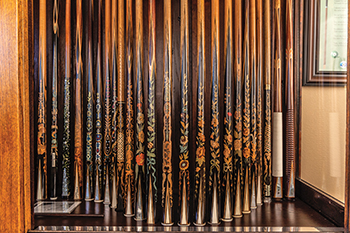 Elaborate marquetry adorns cues made in the 1700s and 1800s. (Photo by Jaimy Ellis) In 1998, one of the European dealers that Stellinga had been working with tipped him off about an auction that was taking place at which a cue that belonged to French general Napoleon Bonaparte was to be sold. The cue had been passed down in the family, eventually coming into the hands of Bonaparte's nephew, Napoleon the Third, who liquidated the cue with various other artifacts in 1884. The cue was privately owned for more than a century — with a legal document written in the 1800s that verified its ownership and authenticity. The cue contains pewter, brass, mother-of-pearl, ivory, and gold inlays and also has a built-in ivory scorekeeper that has scrimshawed numbers and a logo of France. This cue, which also included a case lined with purple velvet, also came with a letter from the original owner of the cue. “He was big into billiards,” said Stellinga, who located photos of the general's billiard room. “We've got a little clipping from a news magazine article that shows him shooting on the pool table that he had custom made as a gift to Alexander the Second, the Tsar of Russia.” Stellinga also owned a cue that was believed to be owned by Marie Antionette, the last Queen of France, but was never able to verify its authenticity. “To me, who made a cue dating from between the late 1400s and late 1800s is of no real concern,” said Stellinga in an article that he wrote. “However, who owned it definitely is. Adding a cue directly tied to a super-star-billiard-dude from anywhere between 1500 and 1900 has always been and always will be a thrill.” Like the cue in his collection that was originally owned by a Duke and passed down to a family member who didn't have an interest in the item. Stellinga arranged for the stick's purchase, which arrived in a box that had the top missing. Irritated by the shipping condition, his mood quickly changed as he began removing the smoke-damaged old varnish from the cue and found gold, silver and pewter. After a little more cleaning, he spotted a peacock inlaid into the stick made of mother-of-pearl. “The thing is just like a piece of jewelry,” he said. “It is one hell of a cue. Then I started to feel like I didn't overpay.” 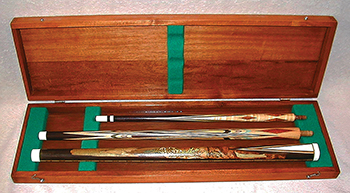 In many instances, the cases were as elaborate as the cues they protected. Then there was the cue that he was tipped off about which was going up for auction in Florida. This stick was originally owned by John McLean, founder of the Washington Post and Cincinnati Inquirer newspapers, and checked both boxes for Stellinga — it was owned by a famous name and is one of the most elaborate cues he had ever laid eyes on — a triple butterfly spliced model that was crafted around 1890 and contained inlays of mother-of-pearl, ivory, ebony, brass and tortoise. The cue, which has multiple inlaid pinwheel designs on the handle, came enclosed in a custom-made wooden case that was equally intricate, with approximately 1,800 inlaid pieces. Stellinga also owns a handful of maces which he guesses were made in the 1500s — long, flat utensils that look like miniature shuffleboard sticks and were used to push the balls. They remained the common stick used by women players into the 1800s. One time, he was scouring through boxes at an old antique store outside of Washington D.C. in search of something unique but was coming up empty. As he was preparing to leave, Stellinga stopped by the owner's office, who pulled out two antique cues and asked if he knew what they were. “Those are Geoffries,” said Stellinga, who has spent decades researching origin and patent information on these items. The owner was so impressed by his knowledge that he simply gave him the sticks. “Geoffries” are believed to be the first actual pool cues that involved a rounded tip at the top rather than the flat, square heads attached to the top of maces. Stellinga believes these cues were made sometime between the 1400s and 1500s and are the oldest cues in his collection. “They're not terribly valuable but they're the beginning of cues,” said Stellinga. “They just look like sticks. They're primitive as hell but they're the beginning of cues.” Today, Stellinga is still thrill seeking, keeping his options open to any new rare cue that is elaborate and unique. After 40 years of essentially establishing the market and then writing the book on it, even he admits that these rare items are becoming more challenging to find. “Trying to find Mark anything that he has to have is literally down to hens' teeth,” said Montgomery, who also collects privately and owns a massive assortment of pool table nameplates. “You just don't find it.” As the Stellingas have transitioned into retirement, the majority of the items that they have acquired throughout the years have been liquidated, some at an auction that was held a few years back, while about half of his cue collection was sold to Chinese investors to be displayed at the World Billiard Museum in Yushan, China. The museum, which opened in the spring of 2024, offers a variety of memorabilia like cues, vintage tables and also has a hall of fame. The museum approached Stellinga about purchasing some of his cues, but he originally told them they weren't for sale. And they weren't, until they agreed to the price at which he valued the collection. “I think they print their own money because they don't quibble about price,” he said. He held back some of his rarer cues and was able to find replacements for some of the others. So, what does the future hold for the collection? Finding a buyer could be hard, as many established collectors are either passing away or selling off their own. It's not just a predicament in billiards either, as collectors of classic cars are seeing a similar trend. “You call the guys who have been your customers and ask them if they want something and they say, ‘Well, I'm selling my collection,' or they've already sold it,” said Mark. “Younger kids either don't want it or don't want to spend the money,” said Connie. “And if they do want it, they can't afford it.” 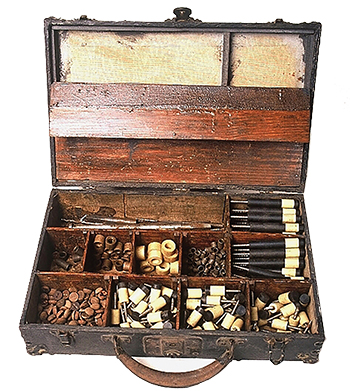 A traveling cue-repairman's case with tips, both glue-on and screw-in ferrules, plus screw-in ebony both weight and length increasing shaft extensions. Late 1800s. While Stellinga was assembling his collection of barbershop antiques, he noticed that a barbershop museum had been opened in Philadelphia. He would ultimately like to see the remaining cues in his collection displayed in a museum devoted to pocket billiards here in the U.S. He also recognizes that the chances of that coming to fruition are remote and that a Plan B may ultimately be needed. “It isn't something I want to sell,” he admitted. “I absolutely love it, but there comes a point where it moves on and, when it does, I would love it to go to some kind of genuine, legitimate, museum.” Right On Cue! The latest wands are sure to add some magic to your game. J&J America Experience the power with the Kaiser all carbon fiber break/jump cue from J&J America, made with high quality carbon fiber shaft and cue butt. Joint protector and case included. www.jjcue.com  Cuetec Cuetec's Cynergy X cues may be the game's most technologically advanced playing cue, engineered to maximize the performance of Cynergy composite shafts. Cuetec's cutting-edge carbon fiber composite resin matrix and advanced component construction deliver effortless power, enhanced consistency and superior control. Zero wood, zero compromises, 100 percent Cuetec. www.cuetec.com 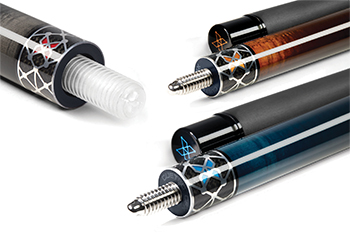 HOW Get the playability of wood and the touch of carbon, blended in perfect harmony in the Flash carbon shaft from HOW. Featuring an all carbon fiber structure, the Flash maintains perfect balance, pinpoint cue precision and abundant power. www.how-brand.com 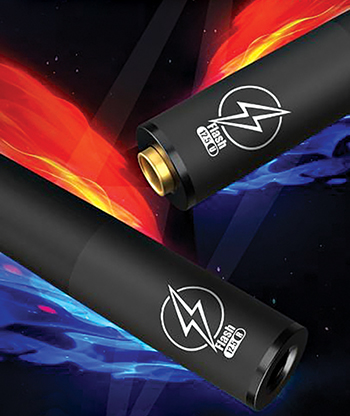 McDermott Cue Mfg. McDermott's 2025 lineup has a bold, modern look with the all new G521B, R and W cues, each featuring a sleek black finish accented by a striking pearl inlay stripe running through the forearm and sleeve. Comes standard with G-Core shaft. www.mcdermottcue.com 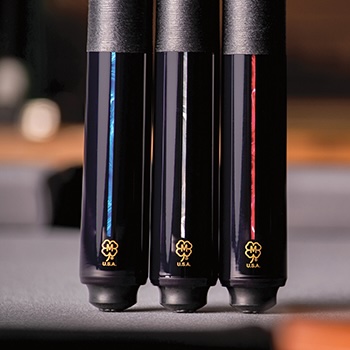 Tiger Products Elegance meets cutting-edge technology with the LX Series from Tiger, a cue line as visually stunning as it is powerful. Designed for players who appreciate craftsmanship and high performance, each LX cue in the eight-cue series is a testament to Tiger's commitment to quality and innovation. www.tigerproducts.com 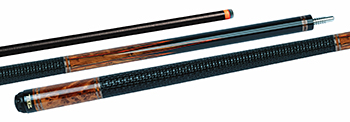 McDermott Cue Mfg. The G522 is McDermott's latest Wildlife laser-engraved masterpiece, featuring a striking 3D “Buck” design on a natural walnut-stained Michigan maple forearm and sleeve, accented by Bocote rings. This perfect blend of artistry and performance comes standard with a G-Core shaft. www.mcdermottcue.com 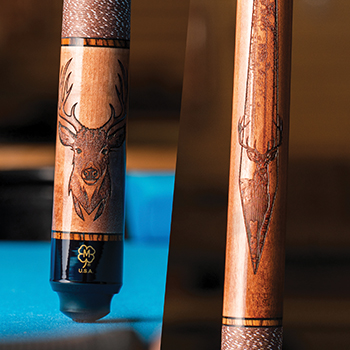 J&J America Reach and make all the shots with the KPL2 Kaiser carbon fiber playing cue from J&J America, which comes with a 3/8x8 joint, leather wrap, design decal and soft Wizard layered tip. An adjustable weight system and extensions allow for perfect balance and multiple length options. www.jjcue.com 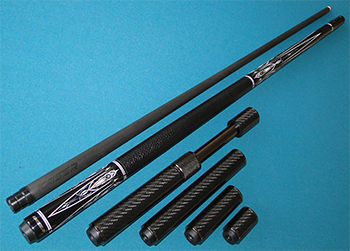 Koda Baller on a budget? Koda's new curly maple jump and jump/break lineup offers classic looks to complement your set up and will out-perform any cue in its price point. Uni-Loc quick release joints, 13.5mm sweet spots and phenolic tips are just some of the features that will help you pop that jump shot or power through your next break. 1-888-308-5632 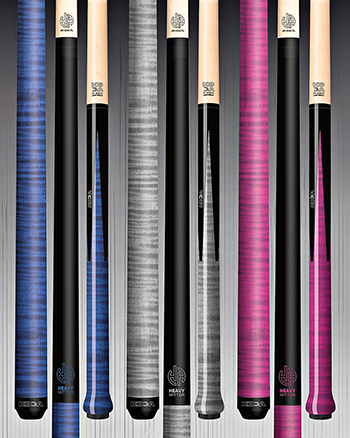 Viking Cues Step up to any challenge with the Defender line from Viking Cues, designed to fortify your resolve. Drawing inspiration from shields, weapons and strategic points, each cue embodies the spirit of conquest. Premium pearl inlays, West African ebony, gator embossed leather wrap, and pearl and black index rings are just some of the features in this incredible line. www.vikingcue.com 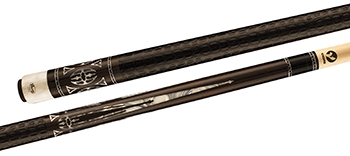 Meucci Cues Elevate your game with the Meucci SL-1 Starlight cue, boasting a honey-stained birdseye maple forearm with six black points and white diamond and circle accents for a sleek design. A 29-inch “Pro” wood shaft and Ultraskin black tip offer superior control and precision. www.meuccicues.com  Mezz Cues Three stunning new Avant cues from Mezz showcase a sophisticated asymmetrical veneer prong design and exceptional craftsmanship. Inspired by the limited edition Wojciech Avant models, the new designs are wrapped in premium linen and feature intricate inlays. www.mezzusa.com 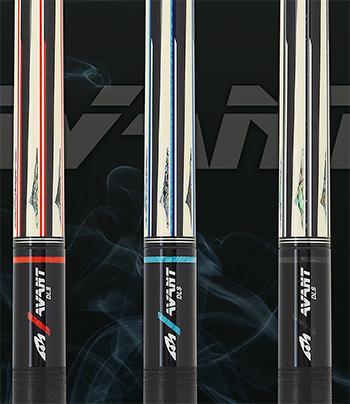 Nick Varner Cues Three new cue series from Nick Varner Cues offer 23 new models total — the Philadelphia Series, the Michigan Series and the Brite Series. Get a Nick Varner Cue before one gets you! www.nickvarner.com 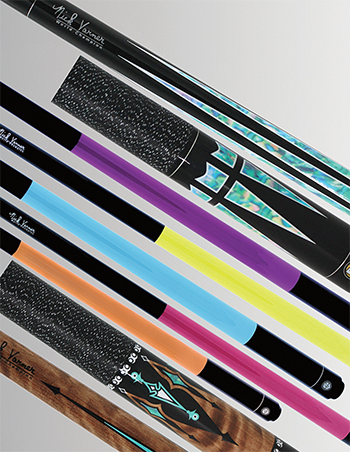 CueStix Int'l Spartan pool cues deliver the perfect balance of craftsmanship and technology for players who demand excellence. Constructed with premium woods like Birdseye and Tiger maple, each cue is designed for lasting durability and striking style. www.cuestix.com 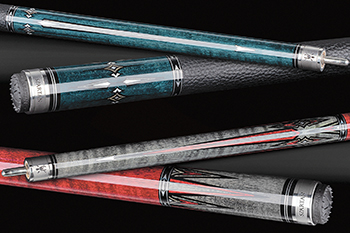 Triple 60 Triple 60 introduces an industry first — the Wood Grain Carbon Play Shaft, an innovative design that blends the durability and performance of carbon fiber with the timeless elegance of a wood shaft. Dual-Core fill technology ensures a constant, high level of performance, with superior aesthetics to match. www.triple-60.com 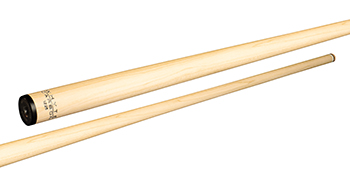 Koda Spice up your game with K2's new Limited Edition KLLE1! This cue packs a punch with its low-deflection core, Everest tip and radial pin. Available in K2's Leather Lore or wrapless. When performance matters. 1-888-308-5632 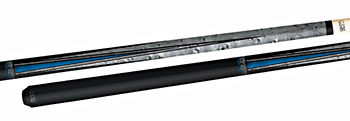 Cuetec Cuetec Cynergy shafts stand at the forefront of carbon fiber billiards technology. Focusing on more than the singular aspect of deflection, Cynergy shafts provide low-deflection accuracy without sacrificing feel and feedback players demand to take their game to the next level. www.cuetec.com 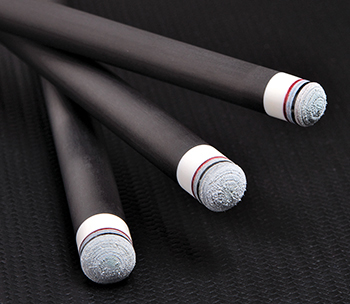 CueStix Int'l Precision and power combined is the trademark of the revolutionary EBM33 from CueStix, the first ever floating, full-length graphic overlay cue from Eight Ball Mafia. Designed for players who demand style and performance, this cue feature a 5/16x18 joint, a 13mm seven-layer Action tip and a 10”-12” pro taper shaft for smooth, controlled strokes. www.cuestix.com 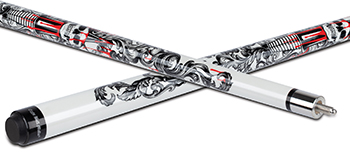 Viking Cues Control the chaos with the Bedlam series from Viking Cues, designed with powerful swirls of color that twist and morph in wild and uncontrollable movement. www.vikingcue.com 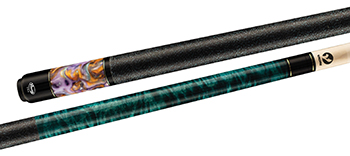 Koda From its unique red, white and blue G-Force tip to its traction control sports grip, the new Bull Breaker from Bull Carbon delivers unmatched power and control for the perfect break — every time! Also available in wrapless. 1-888-308-5632 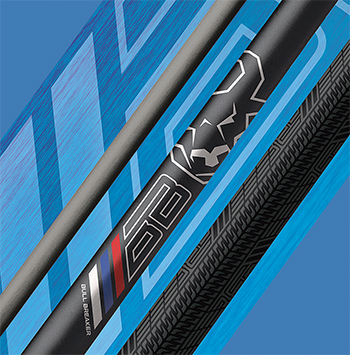 Tiger Products The Fortis shaft from Tiger is one of the most powerful, solid hitting, zero-deflection shafts on the market. A shaft without limits, the Fortis offers great feedback, a solid hit and all the consistency of carbon. www.tigerproducts.com 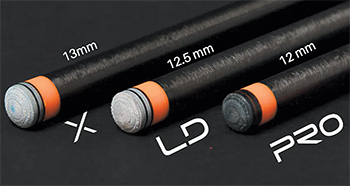 Cuetec The completely reimagined second generation Cynergy SVB Series has arrived! Designed under the direction of the legend himself, the series features an updated construction, full-grain leather wrap, precision-cut rings inlaid with Abalone, and a new 10-point crown design — a fitting tribute to the King of American Pool. www.cuetec.com 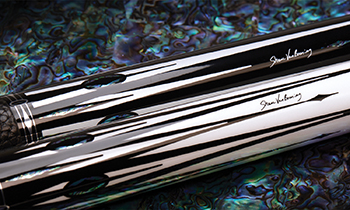
|
|
Since 1978, Billiards Digest magazine has been the pool world’s best source for news, tournament coverage, player profiles, bold editorials, and advice on how to play pool. Our instructors include superstars Nick Varner and Jeanette Lee. Every issue features the pool accessories and equipment you love — pool cues, pool tables, instruction aids and more. Columnists Mike Shamos and R.A. Dyer examine legends like Willie Mosconi and Minnesota Fats, and dig deep into the histories of pool games like 8-ball, 9-ball and straight pool.
Copyright © 1997 - 2025 Billiards Digest
All Rights Reserved
Luby Publishing, Inc.
310 Busse Highway PBM #319 | Park Ridge, IL 60068
Phone: 312-341-1110 | Fax: 312-341-1469